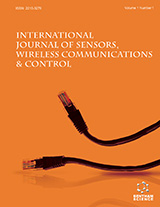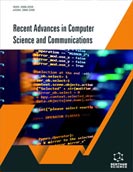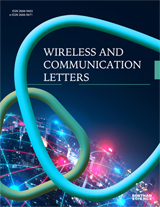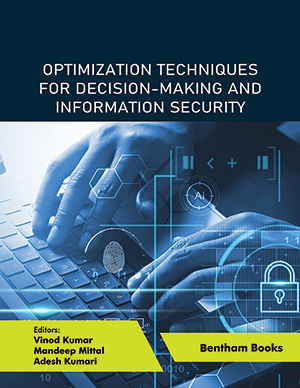
Abstract
The channel sparsity is exploited by transforming the channel into an angular domain from the spatial domain at millimeter wave frequencies in Beamspace Multiple-Input Multiple-Output (B-MIMO) systems. Every beam in B-MIMO corresponds to an individual radio frequency (RF) chain, and thus, beam selection techniques can reduce the RF hardware complexity. RF chain limitation is needed for an ideal beamspace precoding scheme to attain good system performance across the entire bandwidth. New methods of beamspace channel estimation with a small amount of estimation error and low computational complexity are challenging in the beam domain due to the larger antenna arrays deployed. A novel beamspace processing technique to improve the direction of arrival estimation performance for different array configurations with improvement in system performance is desired in a 5G system. A detailed review of the B-MIMO system with its architecture and various beam selection techniques is presented in this paper. The scope of the work is elaborated by incorporating various existing beamspace precoding and channel estimation methods. The paper also presents various beamspace processing schemes for parameter estimation with a focus on the direction of arrival estimation performance.
Keywords: Beamspace MIMO, millimetre wave, massive MIMO, discrete lens arrays, channel sparsity, spectral efficiency, channel estimation, beamspace precoding.
[http://dx.doi.org/10.1109/MCOM.2011.5783993]
[http://dx.doi.org/10.1109/MCOM.2014.6979962]
[http://dx.doi.org/10.1109/JSTSP.2014.2317671]
[http://dx.doi.org/10.1109/TCOMM.2013.020413.110848]
[http://dx.doi.org/10.1109/MCOM.2014.6894453]
[http://dx.doi.org/10.1109/LWC.2014.2363831]
[http://dx.doi.org/10.1109/JSAC.2004.830916]
[http://dx.doi.org/10.1109/MCOM.2018.1600727]
[http://dx.doi.org/10.1109/TAP.2013.2254442]
[http://dx.doi.org/10.1109/TCOMM.2016.2533490]
[http://dx.doi.org/10.1109/APS.2011.5996700]
[http://dx.doi.org/10.1109/C-CODE.2017.7918894]
[http://dx.doi.org/10.1109/ACCESS.2013.2260813]
[http://dx.doi.org/10.1109/MMW.2004.1284943]
[http://dx.doi.org/10.1109/MCOM.2012.6316788]
[http://dx.doi.org/10.1109/VTCFall.2018.8690621]
[http://dx.doi.org/10.1109/ACSSC.2017.8335543]
[http://dx.doi.org/10.1109/JSAC.2019.2929453]
[http://dx.doi.org/10.1109/COMST.2018.2869411]
[http://dx.doi.org/10.1109/PIMRC.2017.8292710]
[http://dx.doi.org/10.1109/LCOMM.2016.2544937]
[http://dx.doi.org/10.1109/TWC.2006.1687786]
[http://dx.doi.org/10.1109/MCOM.2004.1341263]
[http://dx.doi.org/10.14429/dsj.65.6940]
[http://dx.doi.org/10.1109/ACCESS.2019.2897894]
[http://dx.doi.org/10.1109/TCOMM.2015.2431266]
[http://dx.doi.org/10.1109/JSTSP.2016.2523924]
[http://dx.doi.org/10.1109/APS.2012.6349292]
[http://dx.doi.org/10.1109/TCOMM.2015.2434384]
[http://dx.doi.org/10.1109/LCOMM.2018.2829482]
[http://dx.doi.org/10.1109/LCOMM.2018.2803805]
[http://dx.doi.org/10.1109/LCOMM.2019.2902147]
[http://dx.doi.org/10.1088/1757-899X/490/7/072015]
[http://dx.doi.org/10.1109/JSYST.2020.2964283]
[http://dx.doi.org/10.1109/ACCESS.2019.2941261]
[http://dx.doi.org/10.1109/TWC.2016.2613517]
[http://dx.doi.org/10.1109/LCOMM.2018.2889077]
[http://dx.doi.org/10.1109/JSTSP.2018.2818649]
[http://dx.doi.org/10.1109/LCOMM.2017.2745570]
[http://dx.doi.org/10.1007/978-3-030-44041-1_82]
[http://dx.doi.org/10.1109/ISWCS.2017.8108150]
[http://dx.doi.org/10.1049/el.2017.2259]
[http://dx.doi.org/10.1109/APCC49754.2021.9609844]
[http://dx.doi.org/10.1109/TIT.2012.2191700]
[http://dx.doi.org/10.1109/JSTSP.2014.2322582]
[http://dx.doi.org/10.1109/TWC.2004.830852]
[http://dx.doi.org/10.1109/TSP.2012.2187520]
[http://dx.doi.org/10.1109/TWC.2009.080740]
[http://dx.doi.org/10.1109/TSP.2010.2088395]
[http://dx.doi.org/10.1109/TVT.2009.2026906]
[http://dx.doi.org/10.1109/TSP.2005.850331]
[http://dx.doi.org/10.1109/ACSSC.2008.5074790]
[http://dx.doi.org/10.1109/MSP.2007.904815]
[http://dx.doi.org/10.1109/TSP.2005.857024]
[http://dx.doi.org/10.1109/TWC.2014.011714.130846]
[http://dx.doi.org/10.1109/JSAC.2016.2549418]
[http://dx.doi.org/10.1109/JSTSP.2016.2520912]
[http://dx.doi.org/10.1109/TCOMM.2013.090513.120848]
[http://dx.doi.org/10.1109/TVT.2021.3134044]
[http://dx.doi.org/10.1109/ACCESS.2015.2514261]
[http://dx.doi.org/10.1109/TWC.2015.2455980]
[http://dx.doi.org/10.1109/JSTSP.2010.2042410]
[http://dx.doi.org/10.1109/LCOMM.2021.3128969]
[http://dx.doi.org/10.1109/TWC.2019.2948329]
[http://dx.doi.org/10.1109/JSTSP.2014.2334278]
[http://dx.doi.org/10.1109/TSP.2019.2931202]
[http://dx.doi.org/10.3390/electronics8030358]
[http://dx.doi.org/10.3390/app9204346]
[http://dx.doi.org/10.1109/MCOM.2014.6979963]
[http://dx.doi.org/10.1109/LCOMM.2016.2555299]
[http://dx.doi.org/10.1109/SPAWC.2014.6941321]
[http://dx.doi.org/10.1109/WCSP.2016.7752487]
[http://dx.doi.org/10.1109/ACSSC.2014.7094595]
[http://dx.doi.org/10.1109/ACSSC.2014.7094443]
[http://dx.doi.org/10.1109/WCNC.2018.8377093]
[http://dx.doi.org/10.1109/ICC.2017.7996670]
[http://dx.doi.org/10.1109/TCOMM.2016.2557791]
[http://dx.doi.org/10.1109/TIT.2013.2277451]
[http://dx.doi.org/10.1109/ICC.2015.7249042]
[http://dx.doi.org/10.1109/TSP.2016.2580523]
[http://dx.doi.org/10.1109/SPAWC.2019.8815576]
[http://dx.doi.org/10.1111/j.2517-6161.1996.tb02080.x]
[http://dx.doi.org/10.1109/TCSI.2020.3023023]
[http://dx.doi.org/10.1109/TSP.2018.2879620]
[http://dx.doi.org/10.1109/TWC.2017.2776108]
[http://dx.doi.org/10.1109/ITWKSPS.2010.5503193]
[http://dx.doi.org/10.1109/ICUWB.2016.7790383]
[http://dx.doi.org/10.1109/LWC.2020.3019321]
[http://dx.doi.org/10.3390/s22103938]
[http://dx.doi.org/10.1109/ICC.2018.8422344]
[http://dx.doi.org/10.1109/ICASSP.2019.8683360]
[http://dx.doi.org/10.1109/TCOMM.2016.2557791]
[http://dx.doi.org/10.1109/TWC.2017.2718502]
[http://dx.doi.org/10.1109/78.286954]
[http://dx.doi.org/10.1109/78.668812]
[http://dx.doi.org/10.1016/j.nrjag.2013.06.014]
[http://dx.doi.org/10.1155/2015/621358]
[http://dx.doi.org/10.21629/JSEE.2019.06.03]
[http://dx.doi.org/10.1155/2020/4049785]
[http://dx.doi.org/10.3390/rs14081917]
 11
11 4
4

























